Deep Learning-Based Screening of Urothelial Carcinoma in Whole Slide Images of Liquid-Based Cytology Urine Specimens
- PMID: 36612222
- PMCID: PMC9818219
- DOI: 10.3390/cancers15010226
Deep Learning-Based Screening of Urothelial Carcinoma in Whole Slide Images of Liquid-Based Cytology Urine Specimens
Erratum in
-
Correction: Tsuneki et al. Deep Learning-Based Screening of Urothelial Carcinoma in Whole Slide Images of Liquid-Based Cytology Urine Specimens. Cancers 2023, 15, 226.Cancers (Basel). 2024 Dec 23;16(24):4277. doi: 10.3390/cancers16244277. Cancers (Basel). 2024. PMID: 39766186 Free PMC article.
Abstract
Urinary cytology is a useful, essential diagnostic method in routine urological clinical practice. Liquid-based cytology (LBC) for urothelial carcinoma screening is commonly used in the routine clinical cytodiagnosis because of its high cellular yields. Since conventional screening processes by cytoscreeners and cytopathologists using microscopes is limited in terms of human resources, it is important to integrate new deep learning methods that can automatically and rapidly diagnose a large amount of specimens without delay. The goal of this study was to investigate the use of deep learning models for the classification of urine LBC whole-slide images (WSIs) into neoplastic and non-neoplastic (negative). We trained deep learning models using 786 WSIs by transfer learning, fully supervised, and weakly supervised learning approaches. We evaluated the trained models on two test sets, one of which was representative of the clinical distribution of neoplastic cases, with a combined total of 750 WSIs, achieving an area under the curve for diagnosis in the range of 0.984-0.990 by the best model, demonstrating the promising potential use of our model for aiding urine cytodiagnostic processes.
Keywords: cancer screening; deep learning; liquid-based cytology; urine; urothelial carcinoma; whole slide image.
Conflict of interest statement
M.T. and F.K. are employees of Medmain Inc. All authors declare no competing interest.
Figures
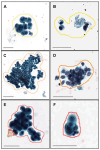

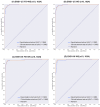
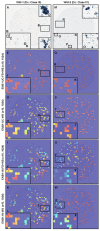
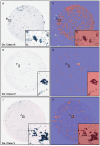
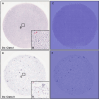


References
-
- DeSouza K., Chowdhury S., Hughes S. Prompt diagnosis key in bladder cancer. Practitioner. 2014;258:23–27. - PubMed
Grants and funding
LinkOut - more resources
Full Text Sources

